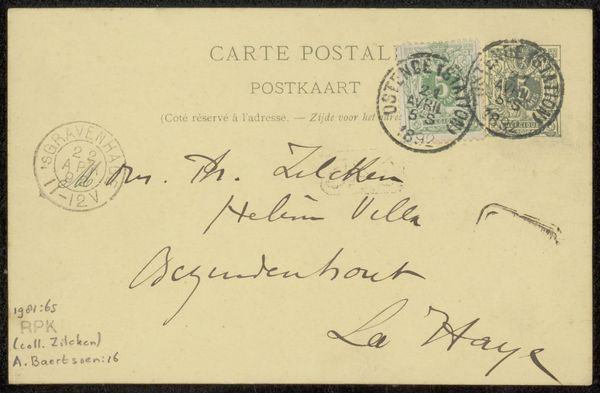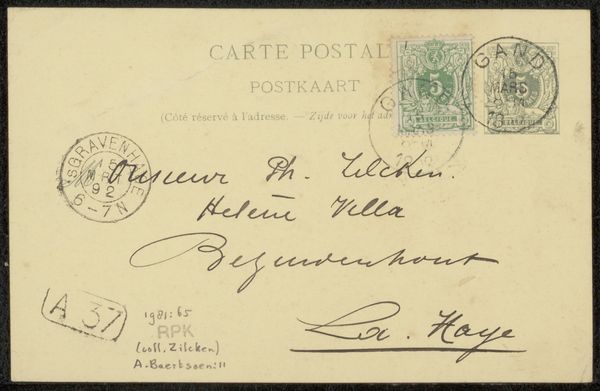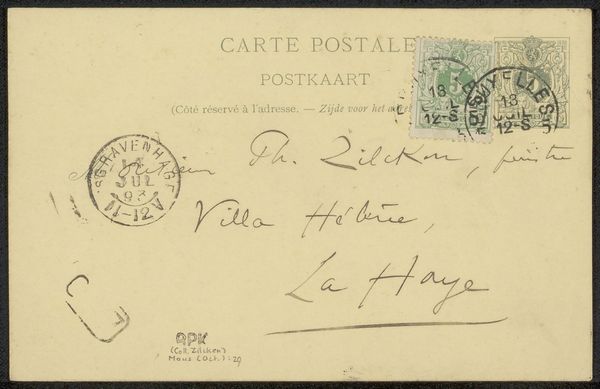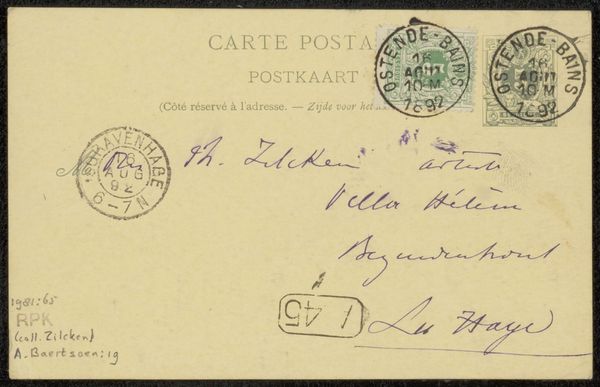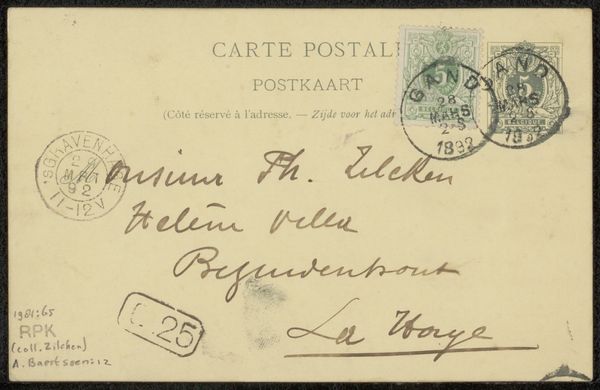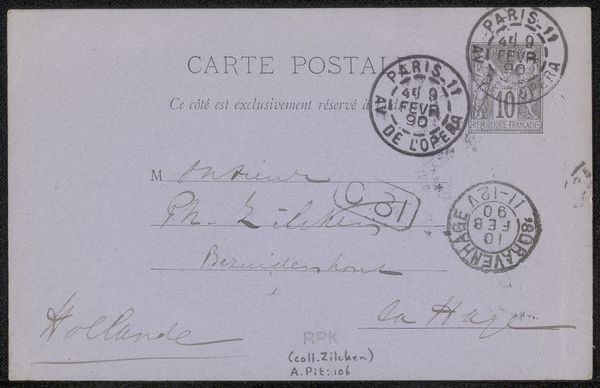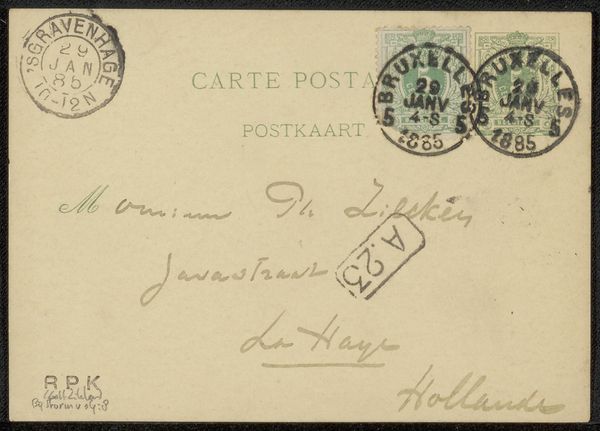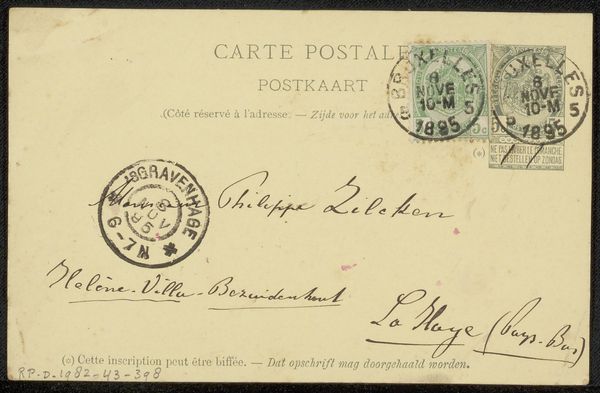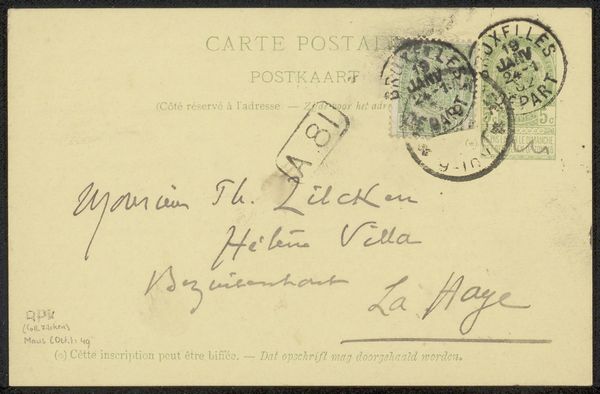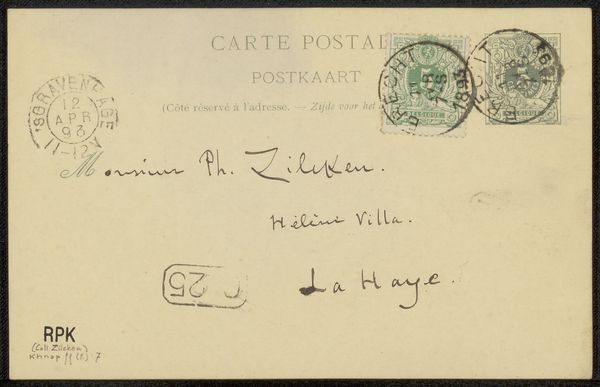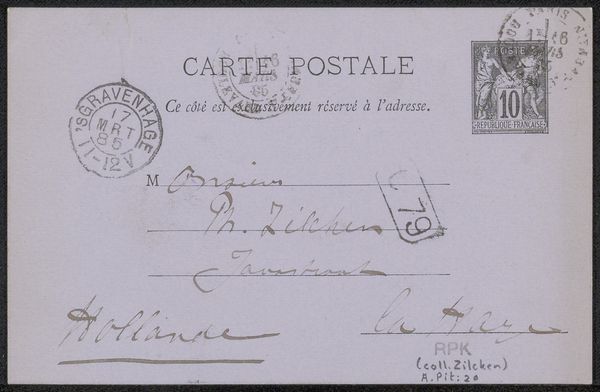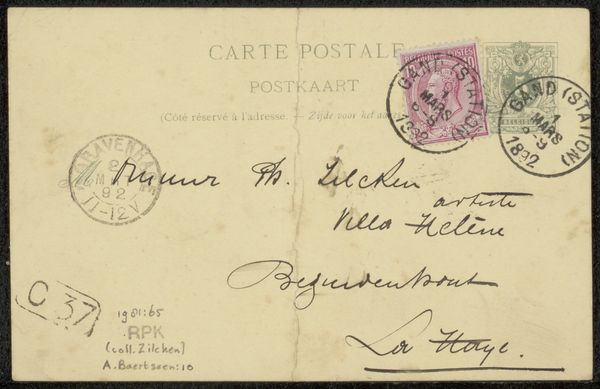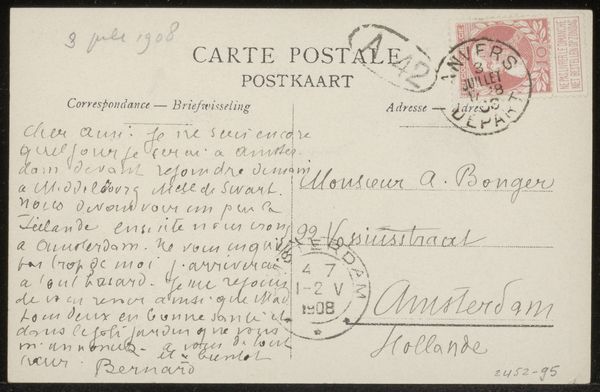
drawing, paper, ink, pen
#
drawing
#
paper
#
ink
#
pen
#
calligraphy
Copyright: Rijks Museum: Open Domain
Curator: What a lovely, intimate object. We are looking at a postcard, quite simply. Or rather "Briefkaart aan Philip Zilcken" a postcard addressed to Philip Zilcken. It’s from around 1892. Editor: It gives the impression of being something ephemeral and immediate. It is small scale, almost easy to overlook and the spidery handwriting and aged paper adds to this effect. It is humble and tactile. You get the sense that Octave Maus had something brief and pertinent to share with Zilcken. Curator: Precisely. What interests me, however, is the means of communication. In those days, the postal system, the postal workers, the delivery routes–these were material links forging a collective sense of society. This card, made of simple paper and ink, is part of that vast logistical network. The calligraphy becomes important— a personal touch in a rapidly standardizing system of global exchange. Consider how that shapes artistic communities at the time, and networks among artists that enable global reach. Editor: That’s a wonderful point. Because what do we truly know of Philip Zilcken and Octave Maus without looking deeper into these cultural histories? How might a contemporary viewer read the material simplicity differently if the social and political framework shifted from that era? How has this influenced postal use of contemporary life? These are very interesting, productive historical trajectories for a seemingly minor artwork! Curator: Exactly, the everyday reality represented by the use of humble materials offers much to muse about! Think too of what the postal stamps tell us. Were they easily and equally available to everyone? Was this artistic connection something to do with their economic background, the society? Even the watermarks or texture of the paper tell stories. Editor: Fascinating. It gives pause to our modern reliance on digital networks. Curator: Indeed. Each stamp and scrawled address offers entry points into considering society at the time and place, as the material supports communication between communities and artists. Editor: Well, considering where the historical context situates the object, that’s quite the narrative of how it relates to global production that we found on a little postcard. Curator: Indeed. It shows that the simplest object can hold the greatest narratives and perspectives on history, community, and even artistic intention.
Comments
No comments
Be the first to comment and join the conversation on the ultimate creative platform.
